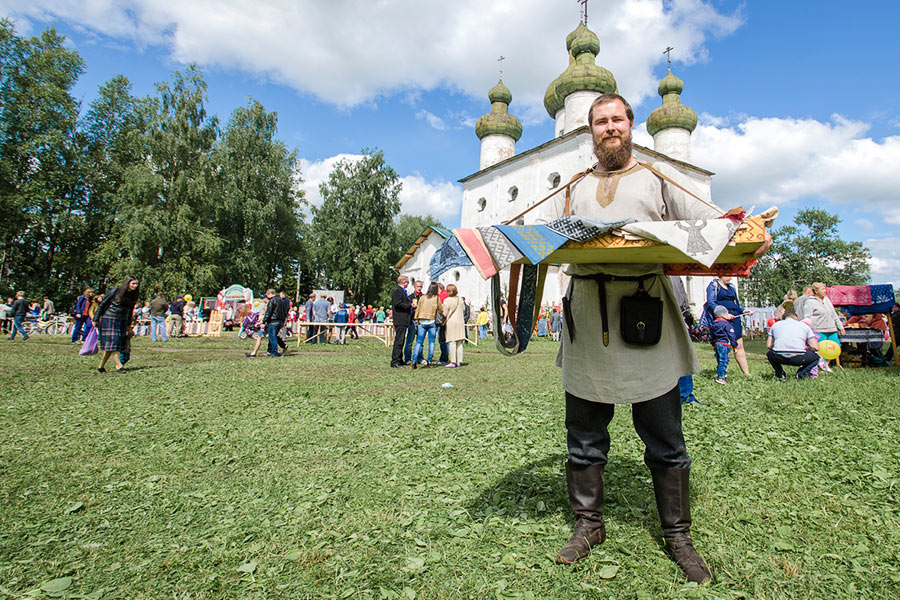
Traditional Russian men’s clothing was practically identical across all of medieval Russia. The basic outfit consisted of pants, a shirt, a hat, and a belt.
If women could decorate even the most simple everyday clothing, then men’s traditional clothing differed in its asceticism. Only young men who hadn’t yet gotten married could wear bright and handsome clothing, including ribbons on their hats, scarves around their necks, jewelry, and other items. For example, in villages around Kursk, rich men wore silver bracelets to show their family wealth.
Grown men, even those with money, dressed humbly. Even clothing for special occasions barely differed from regular, everyday outfits. The main change was the type of fabric used, as holiday outfits used items made in factories.
Traditional Russian clothing for men featured simple cuts. The shirt worn by men had the shape of a tunic, and was made from basic canvas, folded along the weft. In the center of the piece of cloth was a hole and a small cutaway. To make the clothing bigger, tailors would add side seams and triangular wedges. In some places, tailors would also add a slit on the right or in the center.
The collar of the shirt wasn’t high, and was maximum 2 cm (0.75 in) tall. Buttons were used to close the collar.
Traditional Russian clothing not only protected against heat and cold, but also conveyed information about the person wearing it. For example, single men and young boys wore long shirts that reached above the knees. Older men and married men wore shirts that covered the knees. In some regions, young men wore shirts so long that they didn’t even need to wear pants, though this was an exception rather than the rule. Quite often, the first pair of pants was gifted to a boy after the age of 6.
Traditional pants were made of two rather thin legs, each cut of two pieces of cloth. The instep was made with diamond-shaped inserts, rather like modern gussets. As elastic did not exist, the pants were held up with a special rope, called a “gashnik”. A small pocket for combs, wallets and keys could be attached to the gashnik.
Among peasants, traditional Russian clothing was made from homemade cloth, such as hemp, cotton, or linen. In the 19th century, homemade cloths were replaced with manufactured cloths that were cheaper. Homemade cloths were only used for special clothing and rituals, such as funeral clothing.
Belts
Men always wore their shirts untucked, covering their pants. Traditional Russian dress required a belt, with the knot on the left side. It’s unsurprising that there is a saying in Russian that means “to untie oneself”, which means to act rudely or break rules.
Belts were made of cloth, knitted, or woven from threads, cords, or pieces of leather. By the beginning of the 20th century, regular leather belts had already replaced traditional belts in Russian dress. The traditional belts had been filled with meaning since pagan times, and were charms and talismans that were given at weddings or other ceremonies. After a wedding, the bride would give all the guests belts as gifts (even if this meant giving away more than 100 belts). The groom was presented with a belt, which, legend has it, had extra protective powers. Some people would weave names, prayers, or passages from holy books into belts, and children were dressed in a belt for their christening.
But the funeral clothing, also an important part of a Russian’s traditional clothes, did not include a belt. Funeral clothing included no ties, clasps, or buttons.
Wedding clothing for men was similar to standard clothing, and included a pair of pants and a shirt. The shirt had to have long sleeves. The front of the shirt, as well as the hem on the sleeves, was richly decorated with embroidery and inserts. The belt was wide and long, and was also decorated. Often, these ornaments included texts, symbols, and charms woven into the belt.

